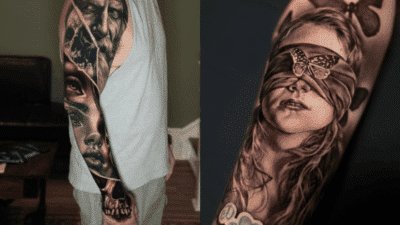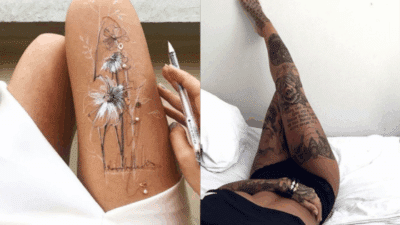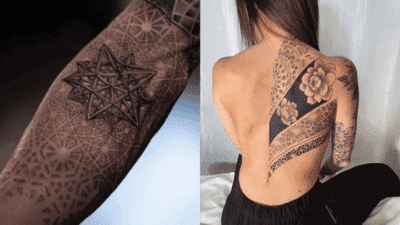Prepare to embark on an exhilarating journey into the heart of a timeless art form! Japanese tattooing, known as Irezumi or Wabori, is far more than mere skin deep adornment; it is a profound narrative etched in flesh, a vibrant tapestry woven with history, mythology, and deep philosophical insights. Understanding the true japanese tattoo meaning unveils a world where every line, every color, and every motif tells a powerful story. From fierce dragons to serene cherry blossoms, each element carries layers of symbolism, reflecting the wearer’s aspirations, beliefs, and life journey. This ancient practice, refined over centuries, continues to captivate and inspire, offering a unique blend of breathtaking aesthetics and profound spiritual resonance. Dive in with us as we explore the rich cultural tapestry that makes Japanese tattoos an unparalleled form of self-expression!
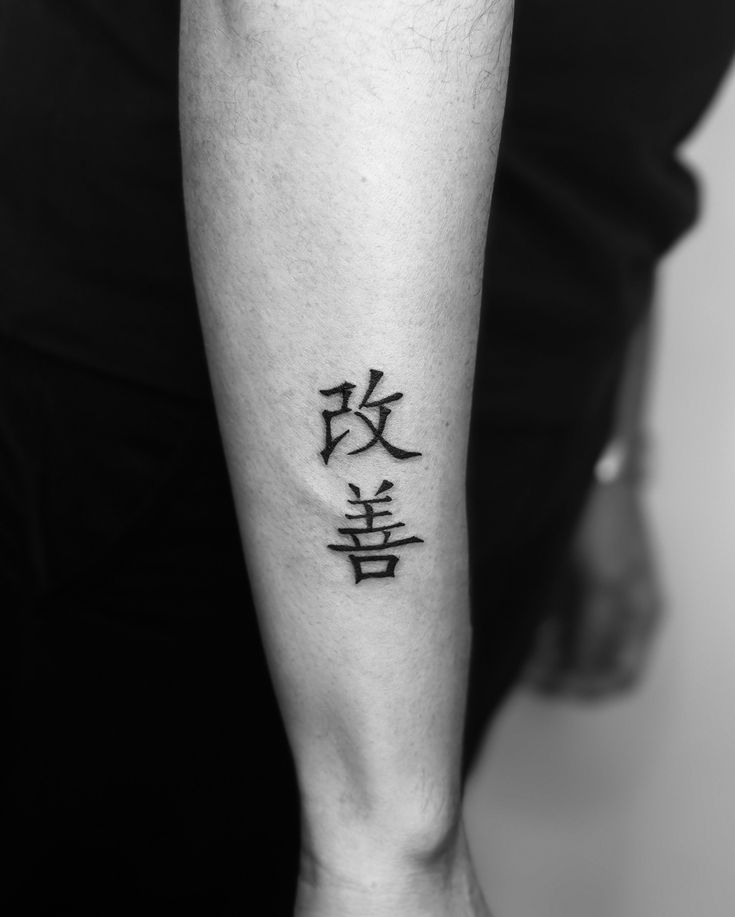


Pros and Cons
| Pros | Cons |
|---|---|
| – Deep Personal Meaning: Each motif carries rich historical and symbolic weight, allowing for profound personal expression. | – Significant Time & Cost Investment: Traditional Irezumi often involves multiple long sessions and substantial financial outlay. |
| – Breathtaking Artistry: Executed by skilled horishi, these tattoos are often considered masterpieces, unique works of art. | – Commitment to Large-Scale Work: Many traditional designs are full sleeves, back pieces, or body suits, requiring long-term commitment. |
| – Cultural Connection: Offers a tangible link to rich Japanese history, mythology, and philosophical traditions. | – Potential for Societal Stigma: Historically, tattoos in Japan have been associated with organized crime (Yakuza), leading to lingering stigma. |
| – Durable & Enduring: Designed to flow with the body, traditional Japanese tattoos age gracefully when properly cared for. | – Painful Process (Tebori): Hand-poking (Tebori) can be more intense and time-consuming than machine tattooing. |
| – Unique Personal Narrative: Elements combine to tell a complex, personal story, making each tattoo distinct and deeply significant. | – Limited Design Flexibility Post-Completion: Large, intricate designs leave less room for future additions or changes without compromising flow. |
The Echoes of History: Unearthing Irezumi’s Roots
The history of Japanese tattooing is as intricate and captivating as the art form itself, stretching back thousands of years. Early evidence of tattooing in Japan dates to the Jomon period (around 10,000 BCE to 300 BCE), where clay figurines, or dogu, display carved markings that suggest facial and body tattoos. These early marks likely held spiritual or ritualistic significance, perhaps indicating status, protection, or tribal identity.
As centuries passed, tattooing evolved. During the Edo period (1603-1868), a pivotal shift occurred. While initially used for branding criminals, tattoos simultaneously flourished as a decorative art form among the merchant class and common laborers, who were restricted from displaying wealth openly. They turned to their skin as a canvas for elaborate, hidden masterpieces. Firefighters, known as hikeshi, famously wore tattoos of water deities and dragons, believing these symbols offered protection from fire. Gamblers, manual laborers, and even samurai warriors in disguise embraced irezumi – a term that literally means “inserting ink.”
This period also saw the rise of the ukiyo-e woodblock print, which greatly influenced tattoo designs. Artists like Hokusai and Kuniyoshi depicted legendary heroes, mythical creatures, and beautiful women adorned with intricate patterns. These prints served as design guides for tattoo artists, known as horishi, solidifying the iconic imagery we recognize today. The cultural reverence for these symbols became deeply ingrained, transforming what was once a mark of punishment into a powerful statement of courage, devotion, and even rebellion.
The Art of the Horishi: Masters of the Skin
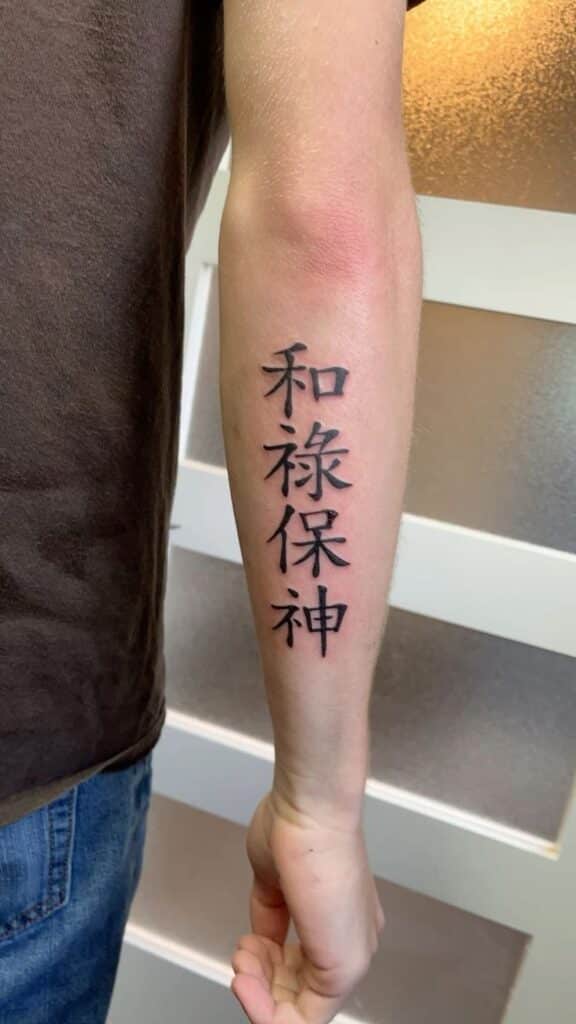

The creation of a traditional Japanese tattoo is a testament to skill, patience, and a deep understanding of the human form. The horishi, or tattoo master, is not just an artist but a storyteller, a technician, and a guardian of tradition. The process often involves tebori, a centuries-old hand-poking method, where ink is inserted into the skin using a bamboo rod with needles attached. This technique is renowned for creating unique textures and subtle color gradations that are difficult to replicate with modern machines. While machines are also used today, tebori remains a revered practice, celebrated for its connection to the past and the distinctive quality it imparts.
A hallmark of Japanese tattooing is its emphasis on flow and composition. Unlike Western tattoos that often stand alone, Irezumi designs are typically large-scale, meant to harmonize with the body’s musculature, creating a dynamic, living artwork. This concept, known as gaku, refers to the background elements like wind, water, and clouds that tie the main motifs together, giving the entire piece a sense of movement and narrative cohesion. Full body suits (sōshinbori) are the ultimate expression of this art, meticulously planned over years to create a seamless visual epic across the wearer’s entire body. The dedication required from both artist and client is immense, forging a bond built on trust and a shared passion for the art. When considering such an artistic endeavor, it’s beneficial to explore various designs and conceptualize what truly resonates, much like exploring diverse cool tattoo ideas or even more specific tattoos for guys.
Decoding Core Symbolism: The Heart of Japanese Tattoo Meaning


Every motif in a Japanese tattoo carries profound significance, acting as a visual language that speaks volumes about the wearer and their aspirations. Let’s delve into some of the most iconic symbols and uncover their rich meanings.
Dragons (Ryū)

Perhaps the most iconic figure in Japanese tattooing, dragons are revered creatures, embodying immense power, wisdom, and good fortune. Unlike their fearsome Western counterparts, Japanese dragons are largely benevolent, associated with water, clouds, and the heavens. They symbolize strength, protection, and the mastery of the elements. Different types of dragons convey specific nuances:
- Horned dragons: Often represent wisdom and age.
- Celestial dragons: Connected to the heavens and divine power.
- Water dragons: Guardians of the seas and rivers.
A dragon tattoo can signify a person who is wise, powerful, and possesses a strong moral compass. Their swirling forms are often integrated into sweeping background elements, signifying their control over the natural world.
Koi Fish
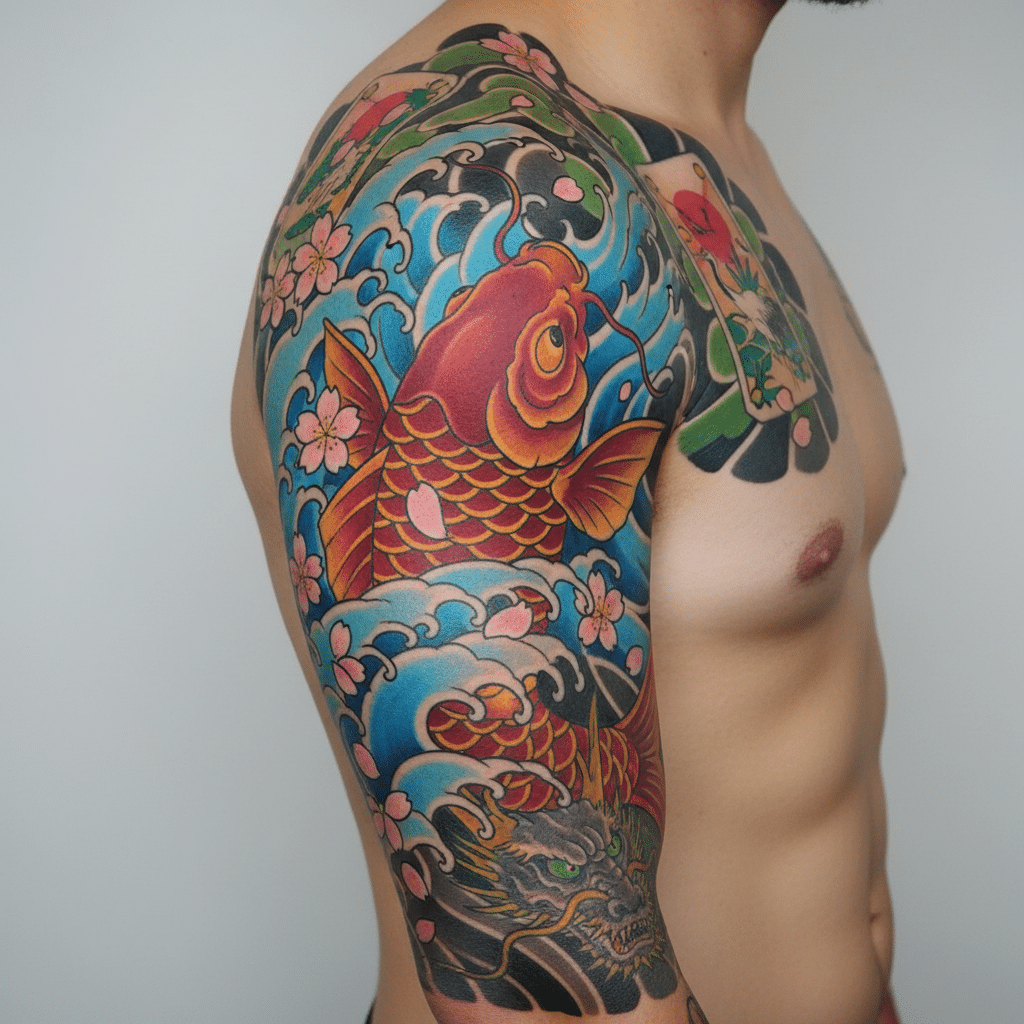
The vibrant Koi fish is a symbol of incredible perseverance, strength, and determination. Legend has it that Koi swim upstream against powerful currents, and if they succeed in reaching the dragon gate, they transform into dragons. This myth makes the Koi a powerful emblem of overcoming adversity, ambition, and transformation.
- Black Koi: Often symbolizes overcoming significant obstacles.
- Red Koi: Represents love, strength, and courage.
- Gold Koi: Denotes wealth and prosperity.
A Koi tattoo is a perfect choice for someone who has faced challenges and emerged stronger, embodying a spirit of unwavering resilience.
Phoenix (Hō-ō)
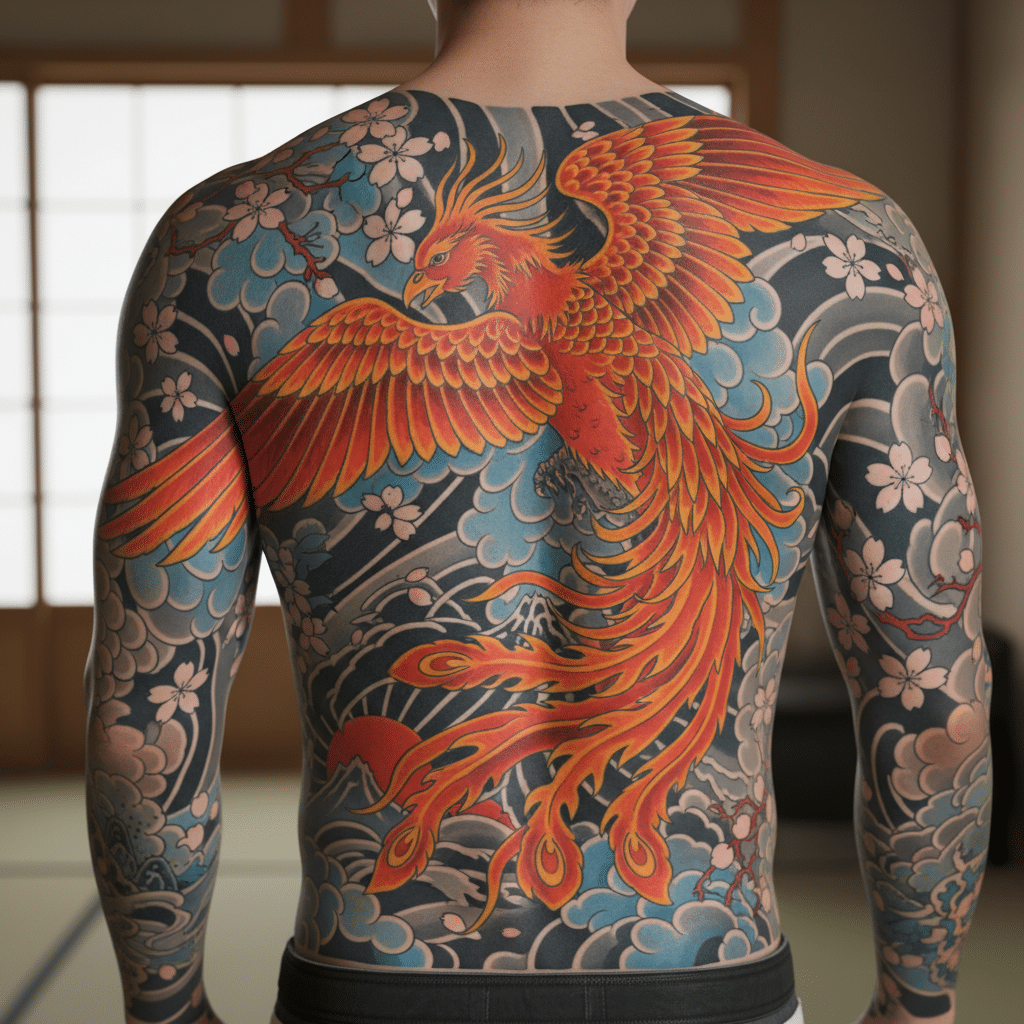
The majestic Hō-ō, or Phoenix, is a mythical bird symbolizing rebirth, renewal, and triumph over adversity. It represents the ability to rise from the ashes, overcome destruction, and emerge stronger and more beautiful. Associated with fire and immortality, the Phoenix is a harbinger of good fortune and peace.
- Rebirth and transformation: Emerging from difficult periods.
- Immortality and resilience: Enduring spirit.
- Good fortune and justice: Its appearance signifies a peaceful reign or prosperity.
A Phoenix tattoo is a powerful statement of hope and regeneration, perfect for those who have weathered significant life changes.
Tigers (Tora)
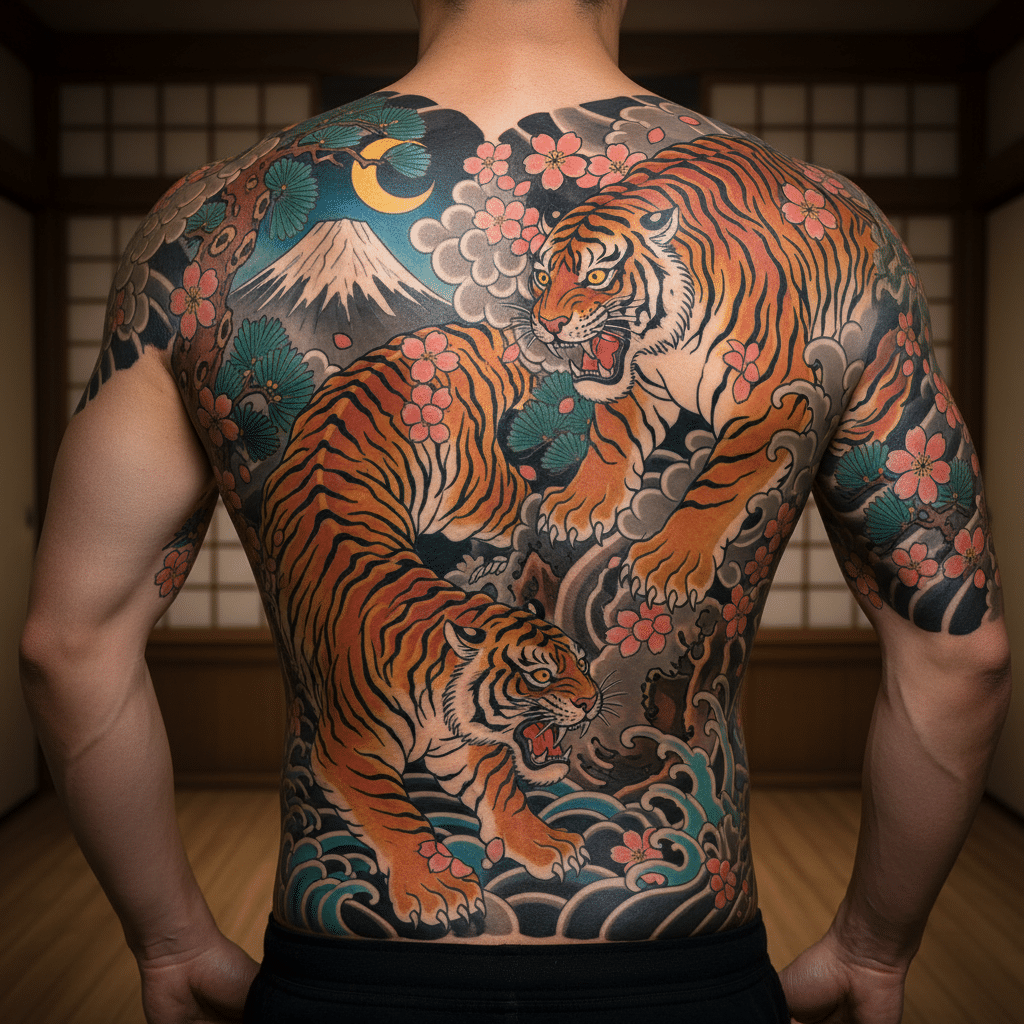
The tiger, a creature of immense strength and ferocity, is a potent symbol of courage, protection, and longevity in Japanese tattooing. Often depicted in dense bamboo forests, it represents both untamed power and the ability to ward off evil.
- Protection: Guarding against bad luck and evil spirits.
- Strength and courage: Unyielding spirit in the face of danger.
- Longevity: Living a long and vigorous life.
A tiger tattoo signifies a person who is brave, protective, and possesses an enduring spirit, capable of facing any challenge head-on.
Samurai and Oni

These two motifs, though distinct, often speak to aspects of honor, battle, and the human condition.
- Samurai: These legendary warriors embody virtues like loyalty, honor, discipline, and courage (Bushido). A samurai tattoo can represent adherence to a strict moral code, unwavering commitment, and a warrior’s spirit.
- Oni: Often depicted as fierce ogres or demons, Oni masks are complex symbols. While they can represent malevolence, they are more commonly seen as protective figures, warding off evil spirits and punishing the wicked. They can also symbolize hidden desires, human nature’s darker side, or a person’s willingness to embrace their imperfections. A Hannya mask, a specific type of Oni mask, represents a vengeful female demon, often symbolizing jealousy and sorrow.
These motifs speak to the duality of human experience – the noble warrior and the challenging inner demons. For those contemplating their inaugural dive into the world of tattoos, considering designs rich in meaning like these can be truly inspiring, much like exploring various first tattoo ideas.
Foo Dogs (Komainu)
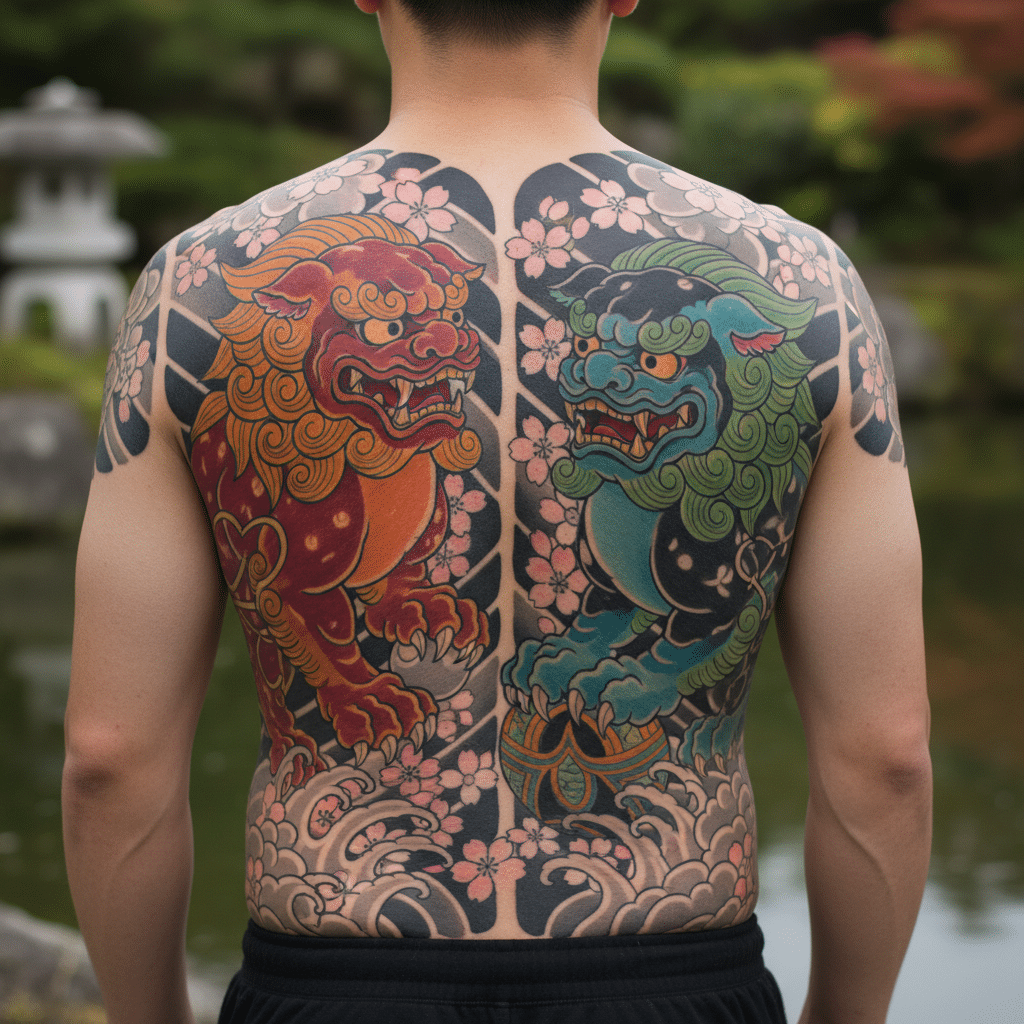
These mythical lion-dog creatures are guardians, often seen standing at the entrances of Japanese temples and shrines. In tattoos, they represent protection, prosperity, and warding off evil spirits. They embody strength, vigilance, and fierce loyalty, serving as powerful protectors for the wearer.
Snakes (Hebi)

Snakes hold a multi-faceted symbolism in Japanese culture. They represent protection, good luck, wisdom, change, and regeneration, thanks to their ability to shed their skin. They can also symbolize healing and the cycle of life and death.
- Protection: Warding off misfortune.
- Wisdom and intuition: Deep knowledge and insight.
- Healing and regeneration: Overcoming illness or hardship.
A snake tattoo suggests a connection to wisdom and the natural cycles of transformation.
Skulls (Dokuro)

While Western cultures often associate skulls solely with death, in Japanese tattooing, the dokuro holds a more nuanced meaning. It symbolizes the cycle of life and death, the acceptance of one’s mortality, and the transient nature of existence. Often paired with vibrant flowers like cherry blossoms, it reminds us to live life to the fullest, appreciating its fleeting beauty. It represents change, fate, and the idea that death is a natural part of life’s journey, not just an end.
Flowers (Hana): Blooming with Meaning

Flowers are integral to Japanese tattoo symbolism, each carrying a unique message.
- Cherry Blossom (Sakura): Perhaps the most iconic Japanese flower, the cherry blossom symbolizes the ephemeral nature of life, beauty, and mortality. Its short, spectacular bloom reminds us to cherish the present moment and appreciate the fleeting beauty of existence. It also represents new beginnings and the delicate balance of life.
- Peony (Botan): Known as the “King of Flowers,” the peony signifies wealth, prosperity, beauty, and bravery. Its lush petals and bold appearance make it a symbol of good fortune and high status. It is often paired with powerful creatures like lions or dragons, enhancing their formidable presence.
- Chrysanthemum (Kiku): The imperial flower of Japan, the chrysanthemum symbolizes perfection, long life, joy, and rejuvenation. It represents dignity, honor, and resilience, enduring into the colder months.
- Lotus (Ren): Rising from the muddy depths to bloom in pristine beauty, the lotus symbolizes purity, spiritual awakening, and rebirth. It represents overcoming adversity and achieving enlightenment, much like its journey from the muck to the light.
- Maple Leaves (Momiji): Often associated with autumn, maple leaves symbolize the beauty of change, the passage of time, and enduring love. They evoke a sense of calm and the natural cycles of life.
Natural Elements: The Background as Narrative
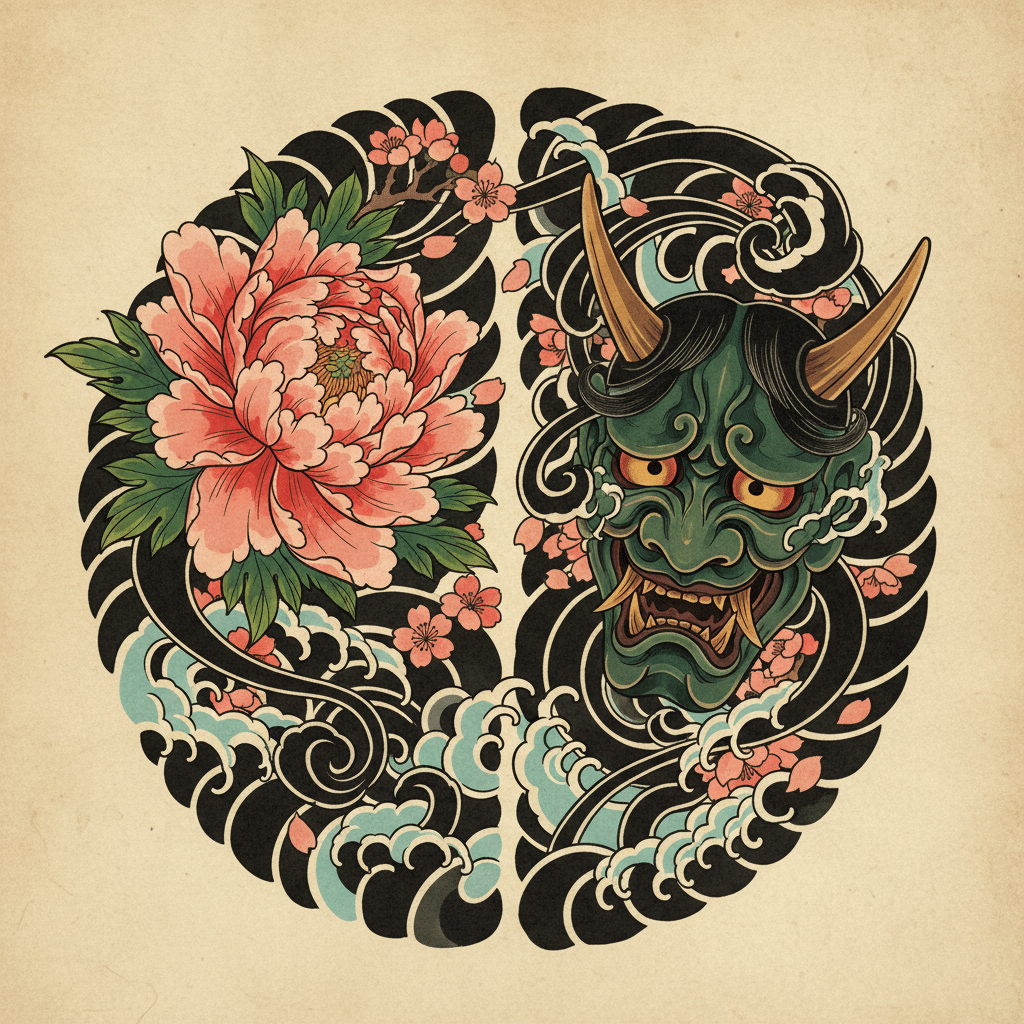
Beyond the main motifs, background elements play a critical role in Japanese tattooing, not merely as fillers but as integral parts of the narrative and flow.
- Water (Mizu) and Waves (Nami): Water, especially in the form of dynamic waves, symbolizes power, strength, fluidity, and life’s constant ebb and flow. It can represent the journey of life, its challenges, and its triumphs. It also signifies change and adaptability, as water can take any form. The “Great Wave” imagery, inspired by Hokusai, is particularly popular, representing both destructive power and majestic beauty.
- Wind (Kaze): Often depicted as swirling lines, wind symbolizes movement, change, and the invisible forces that shape our lives. It can represent freedom, speed, or the unseen power of nature.
- Clouds (Kumo): Clouds represent the heavens, transformation, and change. They often accompany celestial beings like dragons and phoenixes, signifying their divine or elevated status. They can also represent unpredictability and the mysterious aspects of life.
These elements, when skillfully integrated, create a harmonious and powerful composition, binding the individual motifs into a cohesive story. The careful consideration of these background details is what elevates a Japanese tattoo from a collection of images to a unified masterpiece, a testament to the artist’s eye and the design’s underlying principles, much like the precision involved in pixel art ideas where every single detail contributes to the overall image.
The Narrative and Flow: Telling a Story on Skin

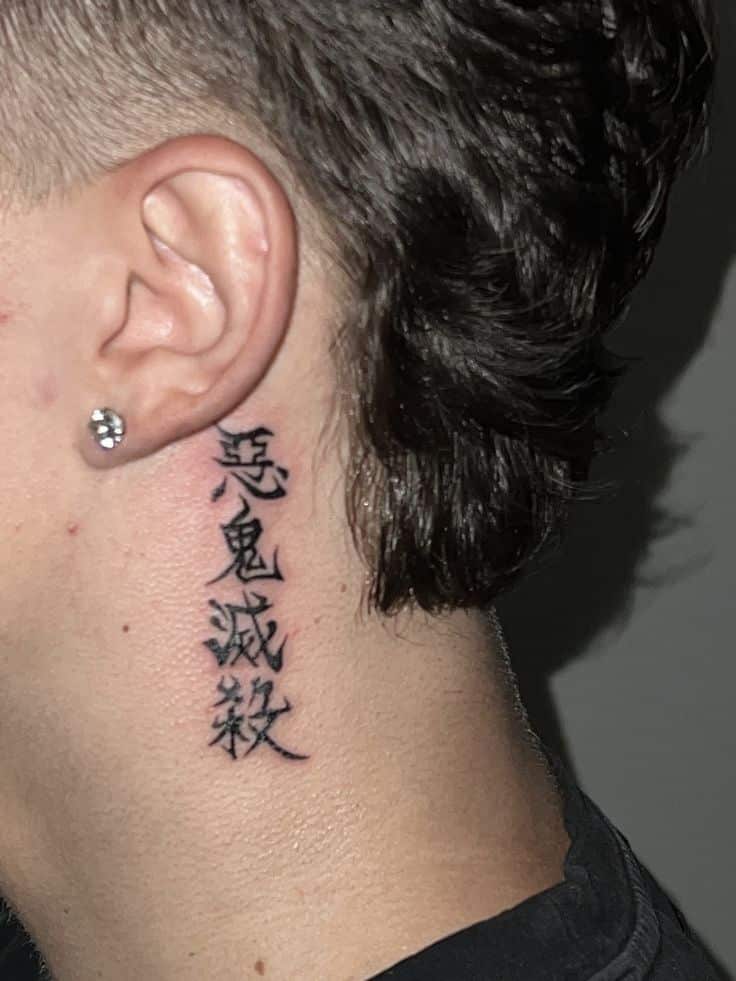
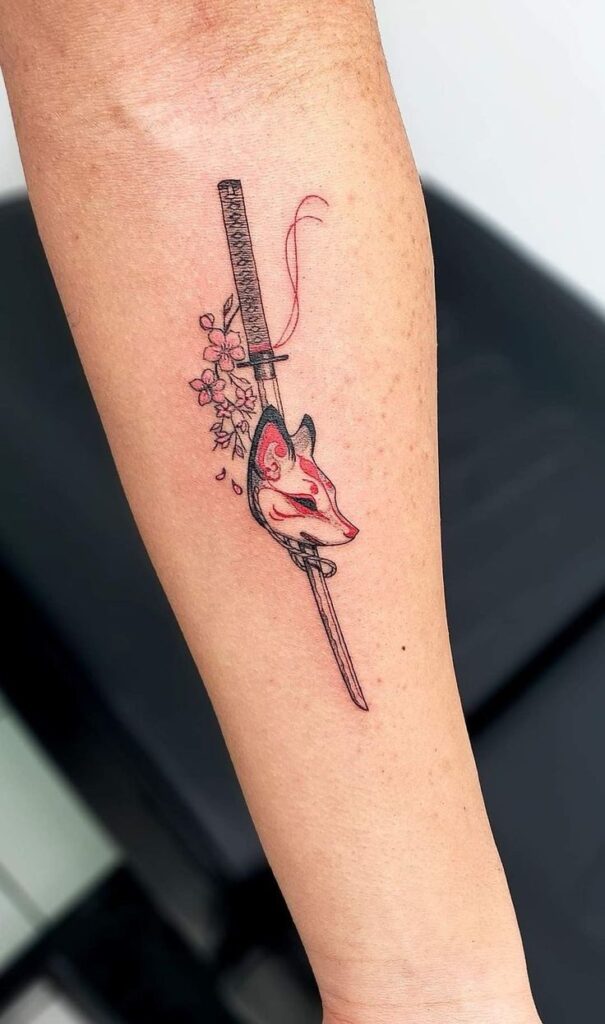
What truly sets Japanese tattooing apart is its masterful use of narrative flow, or gaku. It’s not simply about placing individual symbols on the body; it’s about how those symbols interact, how the background elements like water, wind, and clouds weave them together, creating a seamless, dynamic story that flows with the body’s contours. A dragon might chase a flaming pearl across the back, its scales outlined by swirling clouds, while peonies bloom at its feet. A Koi might swim determinedly upstream through crashing waves, its journey reflecting the wearer’s perseverance.
This intricate interplay creates a living canvas, where each element enhances the meaning of the others. The negative space, the composition, and the deliberate placement all contribute to the overarching theme. The horishi meticulously plans the entire piece, often over several sessions, ensuring that the artwork moves with the body, creating a sense of natural dynamism. It’s a journey of collaboration between the artist and the client, where a deep personal story is translated into an enduring visual epic. The result is a tattoo that is not just aesthetically stunning but profoundly meaningful, a testament to the wearer’s journey and beliefs.
Modern Interpretations and Cultural Appreciation
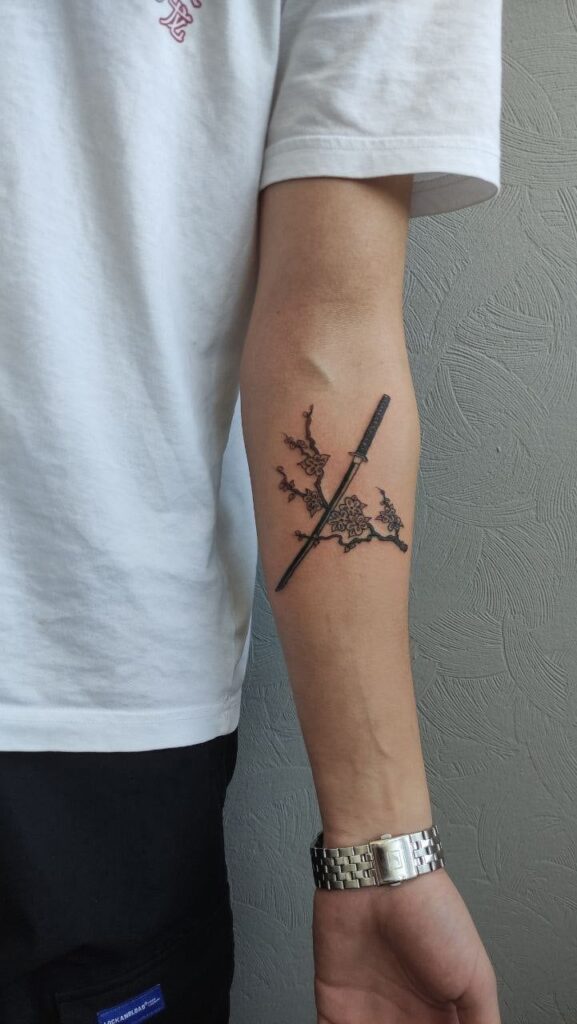
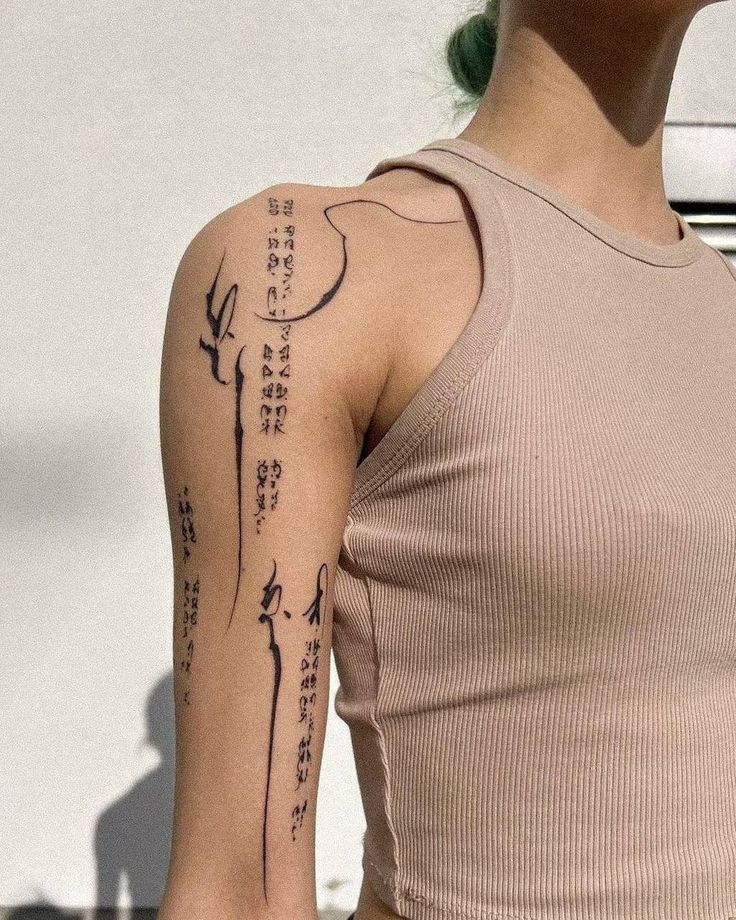

Today, Japanese tattoos continue to capture imaginations worldwide. Artists globally study the traditional techniques and symbolism, adapting them to contemporary styles while striving to maintain respect for their rich origins. The popularity of Irezumi has surged, moving beyond its historical associations to become a widely celebrated art form. People from all walks of life choose Japanese tattoos for their unparalleled beauty, intricate details, and deep spiritual meanings.
However, appreciating Japanese tattooing also means understanding its cultural context. Historically, tattoos carried a stigma in Japan, often associated with the Yakuza. While attitudes are slowly shifting, this historical shadow still means that in some traditional establishments (like onsen or public baths), tattooed individuals may face restrictions. For enthusiasts outside Japan, the focus remains on celebrating the art, respecting its history, and understanding the profound meanings behind each motif. This art form is a testament to resilience, beauty, and the enduring power of symbolism. It’s an evolving tradition, honoring its past while boldly embracing its future, much like innovative approaches in design, such as applying Scandinavian design principles to modern interiors, where traditional elements are reinterpreted for contemporary appeal.
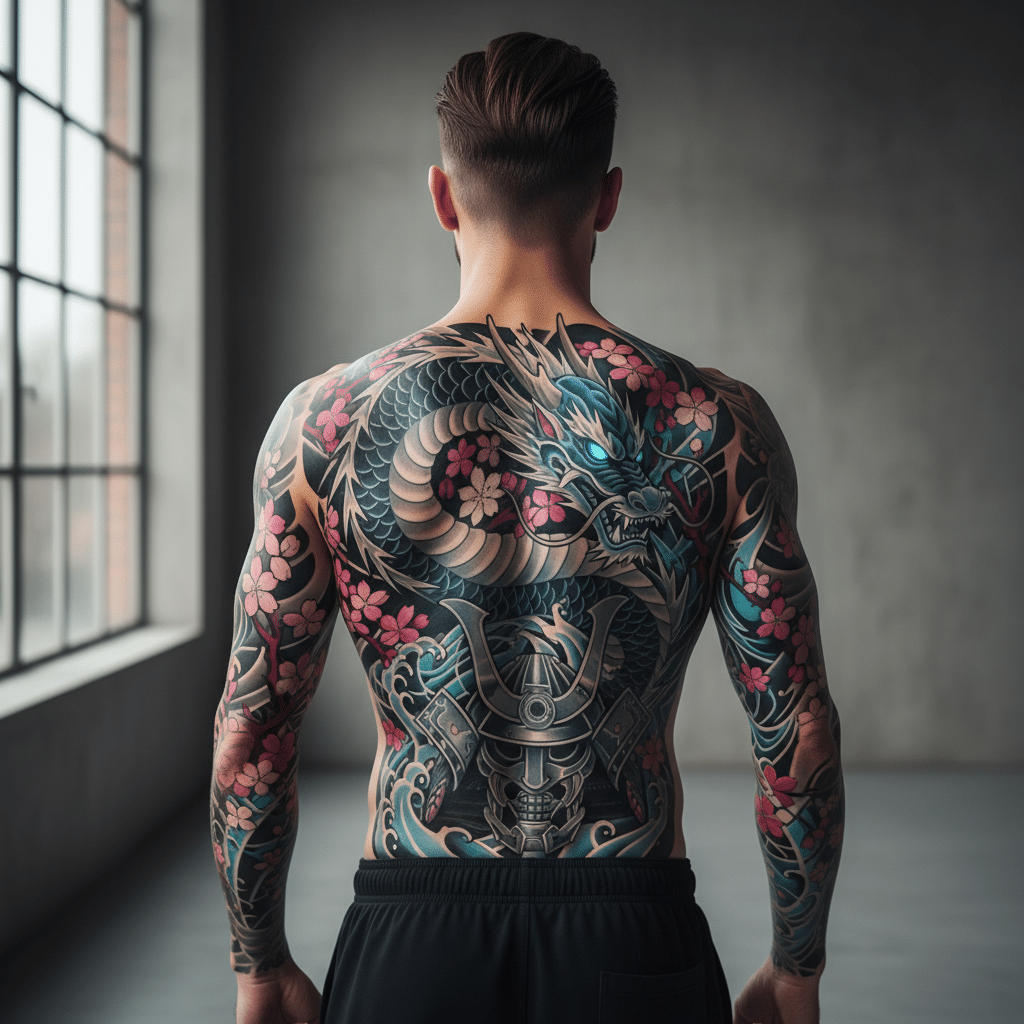
The journey into Japanese tattoo meaning is truly an odyssey of discovery, revealing layers of cultural heritage, artistic mastery, and profound symbolism. Each motif, from the fierce dragon to the delicate cherry blossom, is a whisper from ancient legends, a testament to human spirit, and a declaration of personal truth. These tattoos are not just skin deep; they are living narratives, breathing stories that adorn the body and enrich the soul. The enduring appeal of Irezumi lies in its ability to connect us to a rich past while allowing us to express our deepest selves in the most spectacular and meaningful way.
Embrace this vibrant art form, learn its language, and perhaps, one day, tell your own story on the ultimate canvas. What powerful symbol will you choose to guide your journey?
- 67shares
- Facebook0
- Pinterest67
- Twitter0
